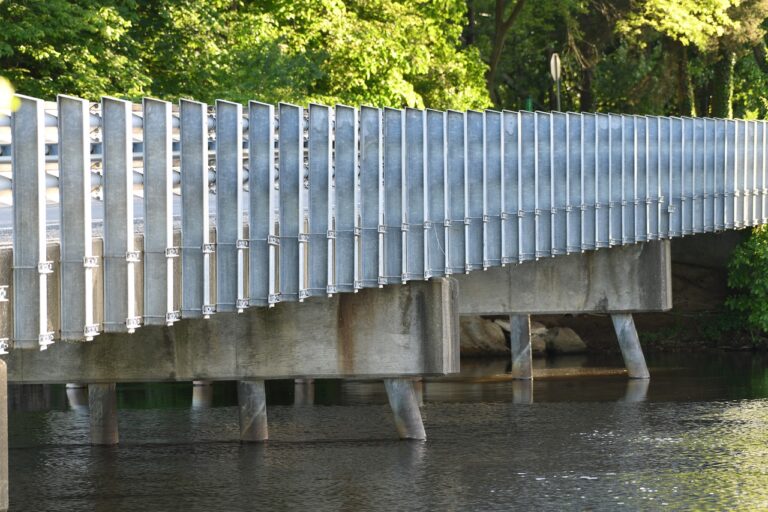Addressing Challenges of Contaminated Soil Remediation in Auto Recycling Sites: All panel 777, Lesar247, 99 exch
all panel 777, lesar247, 99 exch: Addressing Challenges of Contaminated Soil Remediation in Auto Recycling Sites
Auto recycling sites play a crucial role in sustainability efforts by reusing and repurposing valuable materials from end-of-life vehicles. However, these sites can pose significant environmental challenges, especially when it comes to contaminated soil remediation. Contaminated soil is a common issue in auto recycling facilities due to the presence of hazardous substances such as oil, gasoline, heavy metals, and other pollutants. In this article, we will explore the challenges of contaminated soil remediation in auto recycling sites and discuss some effective strategies for addressing these issues.
Understanding the Scope of the Problem
Contaminated soil in auto recycling sites can result from various sources, including leaking fluids from vehicles, improper storage and disposal of hazardous materials, and accidental spills. These contaminants can seep into the soil and groundwater, posing a risk to human health and the environment. In many cases, contaminated soil remediation is necessary to mitigate these risks and ensure compliance with environmental regulations.
Challenges of Contaminated Soil Remediation
Remediating contaminated soil in auto recycling sites can be a complex and costly process. Some of the key challenges include:
1. Identification and Characterization of Contaminants: Before remediation can begin, it is essential to identify the type and extent of contaminants present in the soil. This often requires detailed site assessments and sampling to determine the scope of the problem.
2. Regulatory Compliance: Auto recycling sites must comply with a range of environmental regulations governing the management and remediation of contaminated soil. Failure to meet these requirements can result in fines, penalties, and legal liabilities.
3. Cost of Remediation: Remediation efforts can be expensive, especially for sites with significant contamination. Costs may include excavation, soil treatment, disposal, and monitoring expenses, which can add up quickly.
4. Disruption to Operations: Soil remediation activities can disrupt normal business operations at auto recycling sites, leading to downtime and potential revenue losses.
5. Long-Term Monitoring and Maintenance: Contaminated soil remediation is often not a one-time fix. Long-term monitoring and maintenance may be required to ensure that contaminants do not re-emerge and continue to pose a risk.
Effective Strategies for Contaminated Soil Remediation
Despite the challenges, there are several effective strategies for remedying contaminated soil in auto recycling sites:
1. Source Control: Preventing further contamination is essential to addressing the problem at its source. Implementing best practices for storage, handling, and disposal of hazardous materials can help prevent future soil contamination.
2. Excavation and Removal: In cases where contamination is localized, excavation and removal of contaminated soil may be a viable option. This approach can be effective for quickly addressing hotspots of contamination.
3. Soil Treatment: Various soil treatment technologies, such as bioremediation, chemical oxidation, and soil vapor extraction, can be used to remove or neutralize contaminants in the soil. These methods can be effective for larger areas of contamination or when excavation is not feasible.
4. Groundwater Remediation: In cases where contaminants have leached into groundwater, remediation efforts may be needed to address the problem at the source. Groundwater treatment technologies can help remove pollutants and prevent further migration of contaminants.
5. Monitoring and Verification: Regular monitoring and verification are essential to ensure that remediation efforts are successful and that contaminants are effectively removed or contained. This ongoing process can help track progress and identify any potential issues.
6. Collaboration and Stakeholder Engagement: Engaging with regulators, stakeholders, and the local community is essential for successful contaminated soil remediation. Collaboration can help ensure that remediation efforts are transparent, effective, and aligned with regulatory requirements.
Frequently Asked Questions (FAQs)
Q: How can I determine if my auto recycling site has contaminated soil?
A: If you suspect soil contamination at your site, you should conduct a thorough site assessment, including soil sampling and laboratory analysis to identify the presence of contaminants.
Q: What are the potential health risks associated with contaminated soil in auto recycling sites?
A: Contaminated soil can pose a range of health risks, including exposure to hazardous substances through direct contact, inhalation, or ingestion. These contaminants can lead to serious health effects, such as respiratory problems, skin irritation, and long-term health issues.
Q: How long does soil remediation take to complete?
A: The timeframe for soil remediation can vary depending on the extent of contamination, remediation methods used, regulatory requirements, and other factors. Some remediation projects can be completed within a few months, while others may take several years to fully remediate.
Q: What are the costs associated with contaminated soil remediation?
A: The costs of soil remediation can vary widely depending on the scope of contamination, remediation methods, site-specific factors, and regulatory requirements. It is essential to budget carefully and seek competitive bids from qualified remediation contractors.
In conclusion, contaminated soil remediation in auto recycling sites presents significant challenges, but with proper planning, effective strategies, and stakeholder engagement, these issues can be successfully addressed. By following best practices for soil management and remediation, auto recycling facilities can protect the environment, safeguard human health, and ensure compliance with regulatory requirements.







